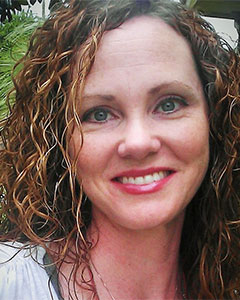Kids with Autism are at Higher Risk to Go Missing from Safe Places
Panic strikes in that moment when you look down to notice your child has vanished. How could it happen so fast? For most, it’s the mischievous toddler who plays a spontaneous game of hide-and-seek in the middle of the busy superstore or decides to run the opposite way when Dad announces it’s time to go home from the park. But if your child is affected by an Autism Spectrum Disorder (ASD), the situation can be even more unexpected and more dangerous. Keeping your child safe can be quite a daunting challenge for every parent, but recent research sheds light on how difficult this can be for parents of kiddos with ASD. According to research out of the Kennedy Krieger Institute, children with ASD are at a much higher risk of bolting than their typical siblings, are likely to disappear for longer periods of time, and the risk of this happening continues long past the age that parents would expect.
Kennedy Krieger’s Interactive Autism Network published a study in the journal Pediatrics in 2012 that found children with ASD are four times more likely to bolt from safe places when compared to their siblings. Listed below are a few other findings you’ll want to know.
About the Kiddos:
- 74% of kids with ASD left home- either theirs or someone else’s.
- 65% reported a near-miss for traffic injuries and 24% reported a near-miss drowning injury.
- The act of leaving home was observed by parents to be goal-oriented - an attempt to go somewhere or do something.
- Parents of children with Asperger’s Syndrome described their child as anxious and children with ASD as happy, playful or excited during the event.
- The average length of time that children went missing was 41.5 minutes.
- Children who ran were older, had more severe symptoms of ASD, and had lower communication scores. In addition, those who were reported missing were less likely to respond to their name and more likely to have experienced a skill loss.
About the Parents:
- An overwhelming 56% of parents reported these events as one of the most stressful factors of caring for their child.
- Despite the high risk of their child leaving home and the probability that it would take a long time to find their child, 50% of parents reported receiving “no guidance from anyone on preventing or addressing” these behaviors.
What Can I Do to Help?
- Wandering is goal-oriented. Think of your home from your child’s (sometimes sneaky) perspective. Ask yourself what the child might want or try to avoid as a reason for leaving the house without permission. Will they leave the safety of their parent to find his/her item of interest? It may prevent their desire to sneak away from home if they can explore this item in a safe environment. It would also be helpful to give them a communication tool to request this item from a caregiver. Create a social story about the item and when/where/how it is safe to interact with it. For more tips, visit www.aware.org
- In addition to traditional security systems and dead bolt locks, consider posting a picture of a stop sign at all exits. Most children with ASD are already using visual aids within their school and home environment and can use these successfully.
- Swimming lessons are critical in Florida where swimming pools, lakes and ponds are in abundance. Ask your therapist, friends or local YMCA for instructors who specialize in working with kids affected by disabilities.
- AutismSpeaks.org is an excellent resource. Here are a few more tips to keep your child safe: Consider a tracking device. Consider an ID bracelet. Alert First Responders. Use the tool kit provided: www.nationalautismassociation.org/docs/BigRedSafetyToolkit-FR.pdf
- Consider having an evaluation and intervention by an in-home ABA-certified behavior specialist. They can identify causes for your child’s behavior, recognize patterns within that behavior, and help you anticipate possible risks.
- Create a social story to teach your child how to stay safe in their home with their family. Your Occupational therapist or Speech therapist can help you create a story with pictures of your child. You can also download a template to make one yourself at: www.nationalautismassociation.org/docs/BigRedSafetyToolkit.pdf
- Practice waiting with your child. Yes, waiting is a skill and it really helps to practice. Start with very short waiting time that you know your child can be successful. Only 2 seconds? That’s a good start. Offer a highly motivating reward for successfully waiting, even if it’s short. Then gradually increase the wait time with short frequent trials each day. If your child can learn to wait to get what they want, they will minimize their risk for bolting for immediate reward.
- Be prepared. Print out the free “Family Wandering Emergency Plan” from www.awaare.org
If your child does wander and goes missing, here’s what the experts recommend:
- Stay Calm
- Call 911
- Search Nearby Water First
- Implement your Family Wandering Emergency Plan (FWEP) www.awaare.org







